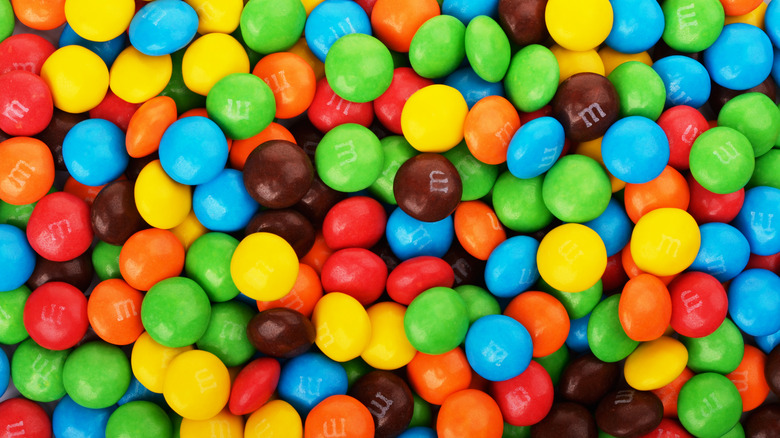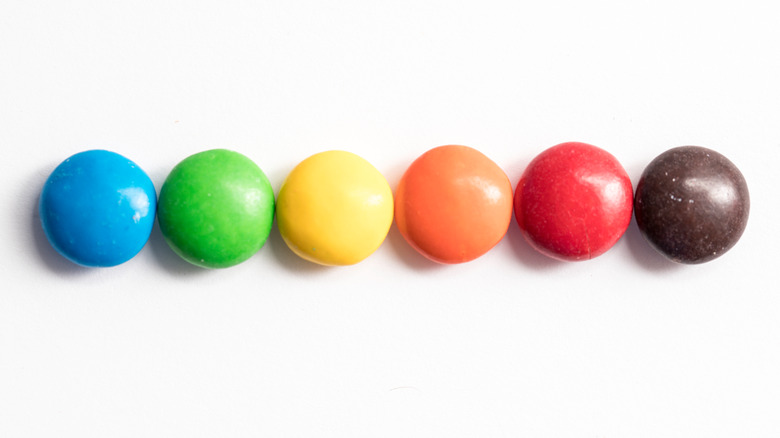The Strange Reason Red M&M's Vanished For More Than A Decade
When candies that are so ingrained in American culture have unusual hiccups in their past, it can be a little mind-bending to learn about them. And for those who are unaware, M&M's is definitely one of those candies. Most people are used to ripping open their brown M&M's bag to find a mixture of red, orange, yellow, green, blue, and brown candy-coated chocolate drops.
The color distribution in these bags has changed over the years. Back in 1997, when maker Mars shared the percentages, the M&M's breakdown per bag was 10% each of orange, green, and blue; 20% each of red and yellow; and 30% of the brown. About 20 years later in 2008, the blue M&M had taken over the lead, accounting for nearly a quarter of a bag (via SAS).
Then, according to statistician Rick Wicklin, as reported by Quartz, the color mixture in 2016-17 saw the green M&M as the most common, though just barely, with all the colors ranging from 13.5% to 19.5%. Note that the red M&M by this count accounted for 15.1% of an M&M bag — right in the middle. However, did you know there was a time when the red M&M couldn't be counted at all.
M&M's have gone through a few color changes throughout the years
Red, orange, yellow, green, blue, and brown is actually far from the original lineup of M&M's colors. Instead of the steadfast rainbow colors you've come to expect, there were actually three changes to the colors over the years — including an end to red M&M's for an extended time. As it turns out, purple M&M's were actually the original color instead of blue in 1941 (via Teen Vogue). Then in 1949, the purple M&M's were changed to a tan color. By 1995, a poll taken by fans determined that blue would replace tan as the new permanent color, and it has certainly stuck in the decades since (per SFGate).
As for red M&M's, Mars actually stopped producing the color between 1976 and 1987, according to Mental Floss. Apparently, the Soviet Union declared that Red Dye No. 2 could pose a health risk to those who consumed it. So, to be safe, the U.S. Food and Drug Administration banned the use of the dye. Note, however, that this should not have affected the red M&M since Mars used a different red dye altogether (Nos. 3 and 40). But, the company chose to err on the side of caution at the time, shelving the red M&M for some 11 years.
Of course, the Soviet Union's claim proved not to be true. Granted, it was during the Cold War (via National Geographic). It'd be comical to think that the "red scare" might have simply been a funny stab at American capitalism at the time. Regardless, those dark years did not include red M&M's in any candy packs: 0%.

